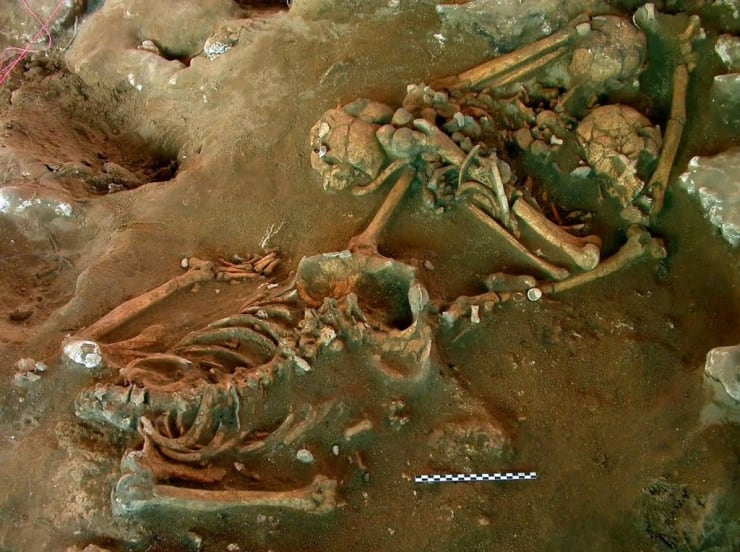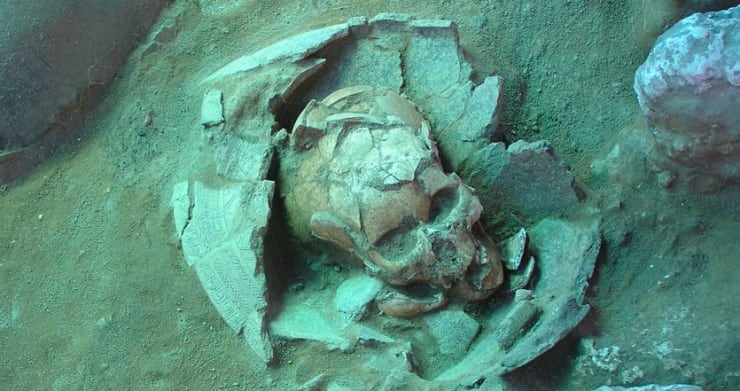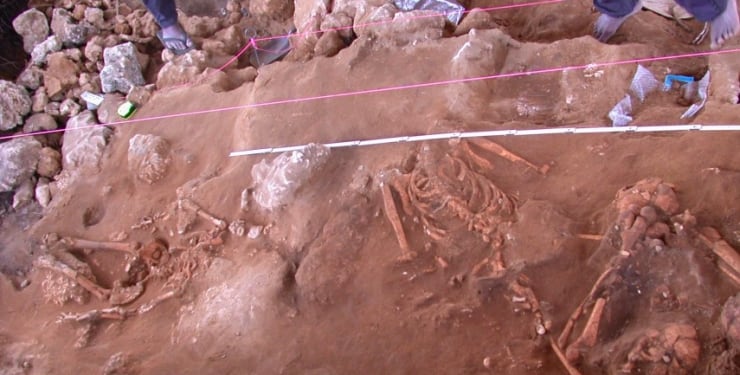
16.12.2009 Discovery of 3000 year old skeletons
Categories: Calendar , Nálezy nejenom s detektorem kovů v mořích a oceanech , Nálezy v Asii a Oceánii
A great discovery was made eleven years ago by underwater archaeologists. They found dozens of skeletons in the Pacific Ocean. Experts estimate their age at three thousand years. They're believed to have been inhabitants of the Pacific archipelago of Vanuatu. The news was released by the media just days before the Christmas holidays.
When an archaeological team began searching the old coral reef in 2008 and 2009, they discovered that it had been used as a cemetery in ancient times. The archaeologists discovered over seventy bodies, which gave them new information about the life of the local people and their burial rituals.
"This is a groundbreaking discovery because it is the oldest and largest skeletal find in the Pacific Ocean. There have been cemeteries found further east, but they are much younger and the discovery has not been as extensive," stated research leader Mads Ravn.
The relatives did not exactly treat their dead relatives with "kid gloves". Besides the fact that the dead had no heads, some had broken arms and legs to fit into the coral reef cavities. Maybe they let them rot first and buried only the skeletons later.
We wrote about it here:https://www.lovecpokladu.cz/home/archeologicke-zpravy-21-12-27-12-2009-nejen-pro-hledace-s-detektory-kovu-4862
Vanuatu is an archipelago located about 2,350 kilometres east of Australia. It includes 83 islands. The land here is scarred by a volcanic eruption that apparently occurred three thousand years ago.
"The way the local people buried their loved ones thousands of years ago was entirely consistent with their view of death. They didn't make much difference between living in the present or having died and gone to the next world. They routinely displayed the skulls of their dead ancestors at home. They still just took them to be with them in their present life," Ravn added.
They probably used the skulls during rituals. This is suggested by the fact that archaeologists found one skeleton that had five skulls on its chest. "This is what made us think that the skulls could have been used during rituals," Ravn noted.
After the local volcanoes raged, they usually removed the volcanic ash and then buried their loved ones just under the ash and sand. They marked each grave with a ceramic vessel decorated with intricate designs or small pieces of bone. The pottery also depicts faces and eyes, perhaps images of their ancestors.
"I've never seen such beautiful artifacts before. It was perhaps the most beautiful pottery of that time in the world," Ravn assessed.
The first inhabitants of Vanuatu probably came from Taiwan and the Philippines. They travelled thousands of kilometres in large canoes with sails, as they carried entire families. Eventually they settled on uninhabited islands. Their livelihood was mainly fishing and cultivating the land.



Sources: www.sciencedaily.com, www.nytimes.com, www.anu.edu.au
The article is included in categories:







